QuestionQUESTION: Hello Susan, thanks for taking my question. I have a 45 gallon tank that I'm just starting up. Here are the fish I intend to purchase when the tank is ready:
1 elephant nose (because I absolutely LOVE them and need to have one)
6 glofish
6 neon tetras
2 platties (one blue, one sunburst)
1 male swordfish
1 male guppy
1 male Beta
5 hatchet fish
1 blue Gardneri Killifish
Will these be compatible and is this overcrowding? These fish are mostly small at adult size. What do you think?
Thank you in advance for your help!!
Christine
ANSWER: Hi Christine, Thank you for your question! Its always best to ask and do reasearch before mixing different species together.
There are some concerns I have with your current stock list. Elephant nose do require a little extra attention than your average fish. They usually will not accept flake foods... preferring frozen brine shrimp, tubifex, bloodworms and glassworms. Especially when first added to the tank. Now most can eventually learn to accept flake foods over time. Elephant nose also prefer to feed at night when the lights are out.
Elephant nose must have good water quality. Make sure to add yours when you are absolutely sure the tank is cycled and there are no levels of dangerous ammonia or nitrites present. Keeping nitrates low is also important (done via water changes).
They are amazing fish! I use to see them a lot around where I'm located. But now I don't see them anymore. Petstores just don't seem to stock them.
The elephant nose should be fine with other community fish. Just make sure he has a hiding place and you be sure he gets to eat everynight.
With keeping a betta.. Depending upon their personality, they can be just fine in a community tank with other fish. While others are simply too shy or too aggressive. You also have to be sure the filter current is not too strong because bettas are easily made miserable by a strong current since they are quite weak swimmers. Use a plastic plant anchored in front of the outflow of the filter to more finely distribute the current. Also use a square filter sponge with a hole cut in to fit over the filter's intake. This doubles as preventing delicate fins or little fish from getting siphoned and injured at a filter's strong intake pull and as a extra 'biofilter' where good bacteria love to grow.
Keeping a betta in a community tank is a gamble. Just be sure to have plan B in case he is miserable no matter what you do or he makes life miserable for the other fish.
The fish on your stock list should all generally get along well. Just be sure to stock your tank slowly to allow your biofilter to catch up with the extra wasteload put on the tank.
Only a few fish per week. Stocking the most delicate sensitive species last.
I don't feel your aquarium will be overstocked. As long as you keep up with weekly or ideally twice weekly 30-50% water changes your aquarium's water quality should remain quite healthy.
I hope this helps and good luck!
Susan~
---------- FOLLOW-UP ----------
QUESTION: Susan,
Thank you for taking my follow up question. You were a huge help! I decided to take the beta off my list and possibly go with a couple clown loaches to help keep the bottom of the tank clean. My main goal is color and although the betas are beautiful, I don't want to take the gamble. Can you think of any other colorful fish I might be missing that would be happy in my community tank?
On adding a fish a few at a time....do you think this will be okay?
the 2 platties, 1 male guppy, and 1 male swordfish first---
after a couple weeks the 6 glofish--
after a couple weeks the 6 neons---
After a couple weeks the 5 hatchets
after a couple weeks the blue gardneri killifish and the 2 male clown loaches (to replace the beta or something else you may recommend)
and finally my pride & joy--the elephant nose. I can't wait! But I will (lol)..... I have a tube all ready for him and I will def do the brine shrimp and tubifex worms. Will the other fish eat that? Or should I also do the flakes too?
Lastly, How many fish can I put in this 45 gallon tank? I know these fish are pretty small but I may want to add a couple more down the line and I don't want to overcrowd.
Thanks again for all your help. I will be happy to do your excellent ratings!!!
Happy 4th of July!
Christine
AnswerHi Christine, You're welcome!!
I think Clown loaches are awesome fish! But they can grow to 8 inches or larger. So keep that in mind. Other good bottom dwellers are my favorites the Corydoras catfish. There are so many species available.. All are generally easy to care for. The emerald green Cories might be a species you would be interested. All cory species generally mix well together. There are specis that have speckled all over, stripes and even one species called a 'panda cory' due to its panda-like markings. These catfish stay small, eat most all aquarium foods, enjoy being in groups and get along with almost all other aquarium fish.
I think your current lineup of fish to add in order is just fine as long as you are certain to test the water or do very frequent water changes. Be sure to feed the fish very lightly once or twice a day. If you don't have test kits to specifically monitor ammonia, nitrite and nitrate... Do a 20-30% water change every other day and anytime your fish seem a little 'off' just to be sure ammonia is not getting out of control.
All the other fish will eat the brine shrimp and worms as well. It makes a great supplement in their diet as well.
As for how many fish you can keep in your 45 gal, that does depend on the fish in question. You could keep roughly a 1-inch neon/guppy sized fish per gallon due to their small body size and low waste level. But thicker/chunkier fish like platies or swordtails produce more waste and need more space, roughly 1- 1/2 to 2 gallons per fish. There really is no strict rule. You just have to be sure to take in account the fish in question's body size, activity level, diet and waste production.
I recommend using your best judgement and knowledge by researching the species you plan on keeping and take into consideration their demands and going from there. The amount of water changes you do also plays a factor as well.
I do hope this helps and best of luck to you!!
Susan~

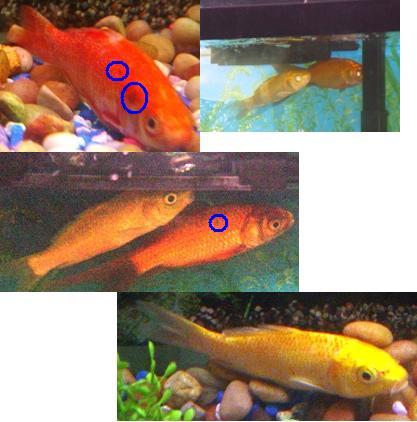 Fishes lying on the bottom
QuestionQUESTION: Hi Nathan,
Chris Robins is kind enou
Fishes lying on the bottom
QuestionQUESTION: Hi Nathan,
Chris Robins is kind enou
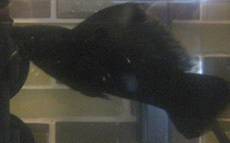 Setting up a brackish tank
QuestionSailfin Molly?
QUESTION: Hi Renee,
You
Setting up a brackish tank
QuestionSailfin Molly?
QUESTION: Hi Renee,
You
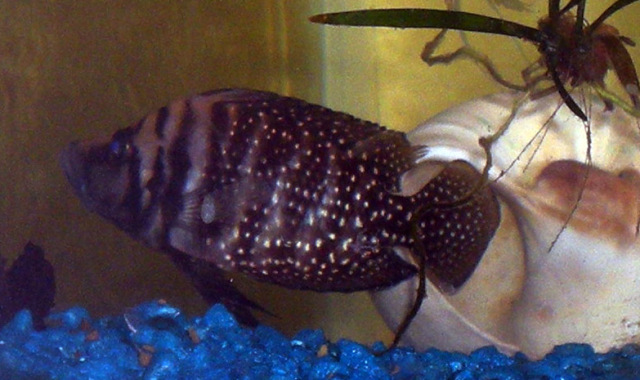 Identify my fish
Question
mystery fish
Hello,
first t
Identify my fish
Question
mystery fish
Hello,
first t
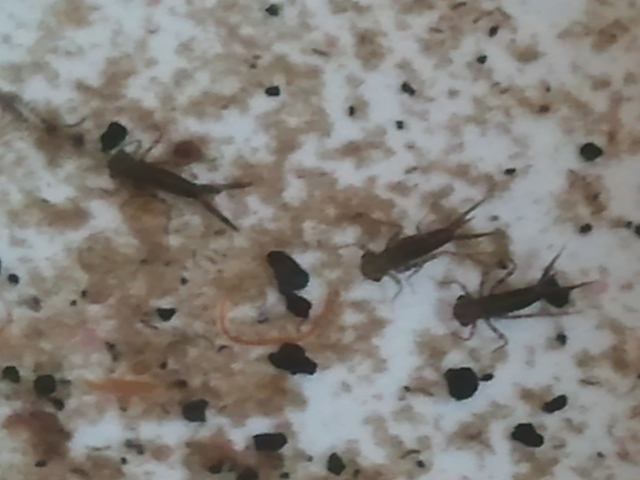 Found brown bugs in my filter!
Question
Bugs in tank
I cant find this answer an
Found brown bugs in my filter!
Question
Bugs in tank
I cant find this answer an
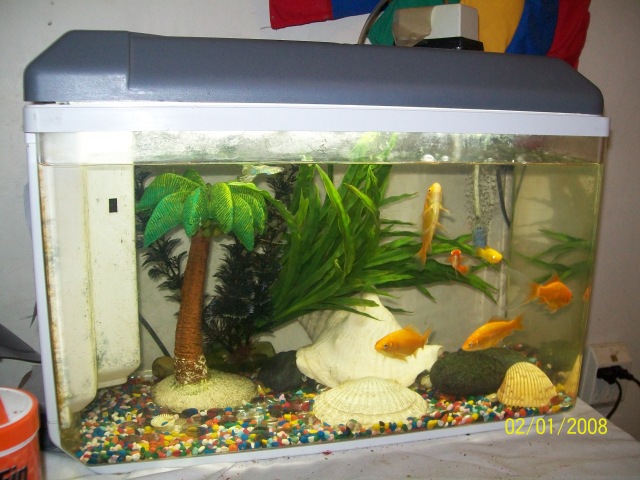 Whats a water hyacinth
Question
Whole tank
Renee, you answered my last questio
Whats a water hyacinth
Question
Whole tank
Renee, you answered my last questio